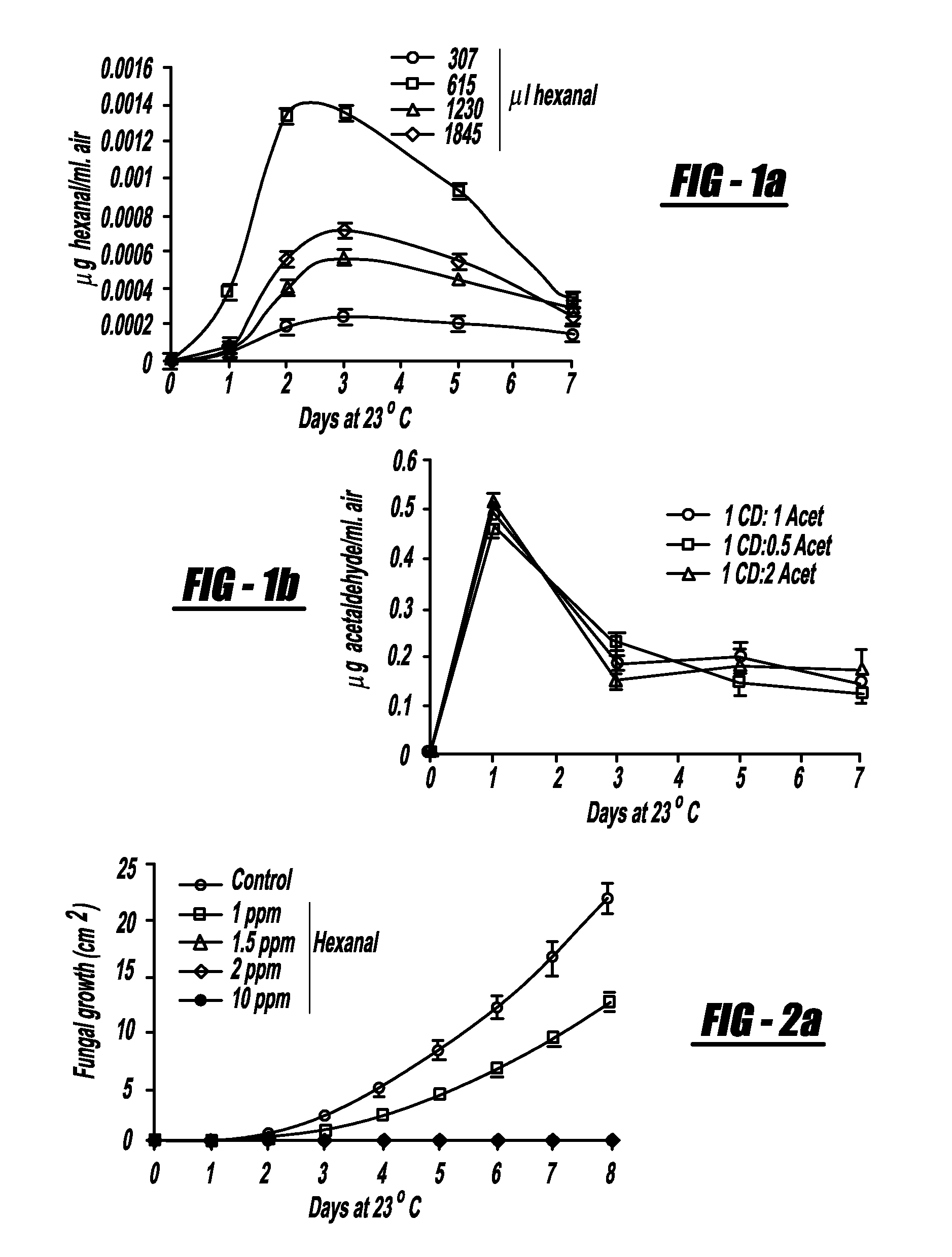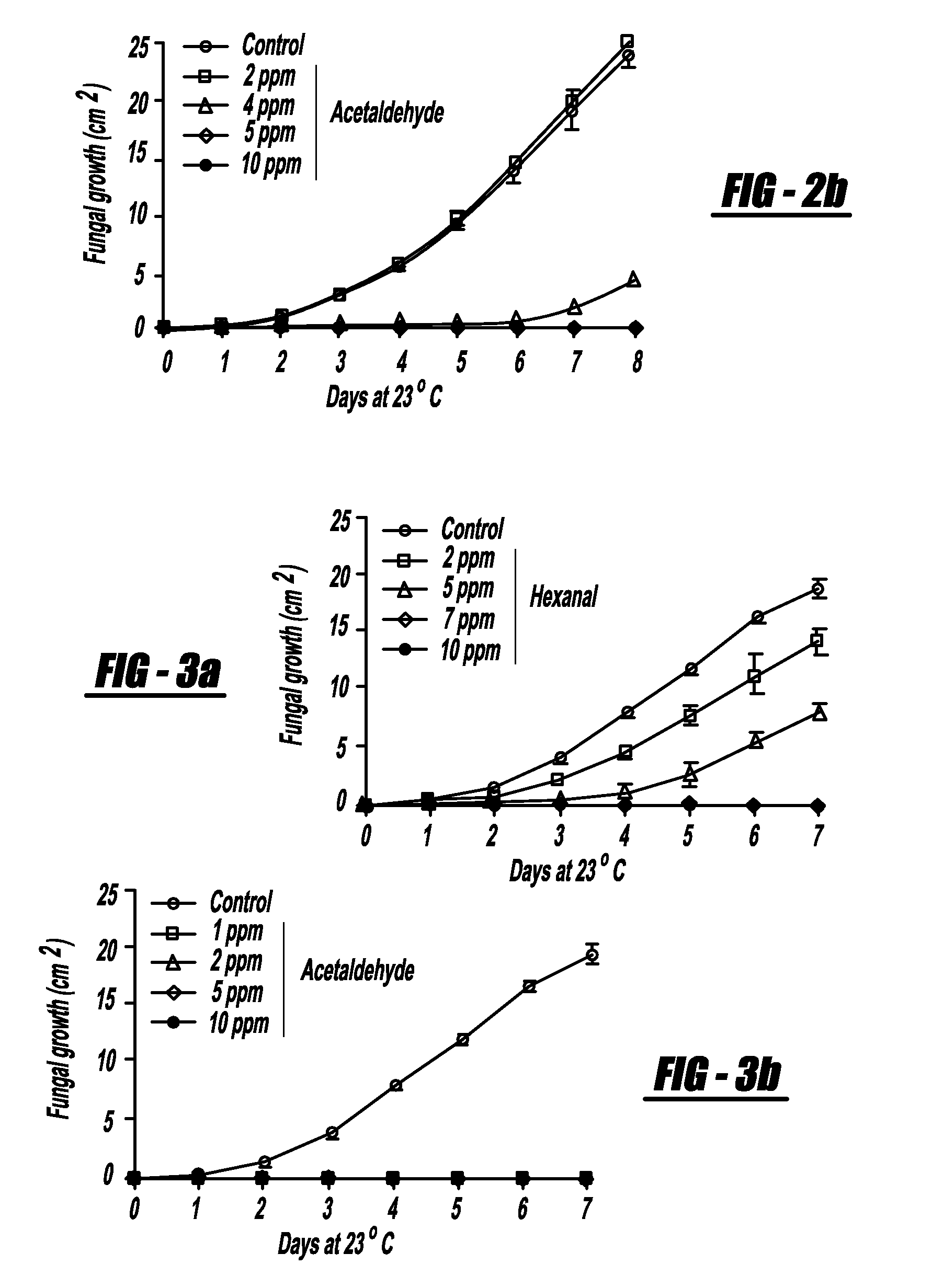Micro-encapsulation of volatile compounds into cyclodextrins: a new technology to reduce post harvest losses
a volatile compound and cyclodextrin technology, applied in the field of antimicrobial materials, can solve the problems of premature release from the application point, difficult control of these organisms, and relatively short lifespan of perishable items, so as to prolong the life of fresh produce, and prolong the freshness of produce.
- Summary
- Abstract
- Description
- Claims
- Application Information
AI Technical Summary
Benefits of technology
Problems solved by technology
Method used
Image
Examples
Embodiment Construction
[0034]The following description of the preferred embodiment(s) is merely exemplary in nature and is in no way intended to limit the invention, or uses.
[0035]In accordance with one embodiment of the present invention, growth of Colletotrichum acutatum, Alternaria alternata and Botrytis cinerea was evaluated in vitro in the presence of hexanal and acetaldehyde.
[0036]Cyclodextrins (CD) are naturally occurring molecules (produced enzymatically from starch) composed of glucose units arranged in a bucket shape with a central cavity. These oligosaccharides are composed of six, seven and eight anhydroglucose units, namely α, β and γ, respectively. All have a hydrophilic exterior and a hydrophobic cavity, which enables them to form inclusion complexes (IC) with a variety of hydrophobic molecules. The various cavity sizes allow for great application flexibility since ingredients with different molecular sizes can be effectively complexed. Thus, acetaldehyde and hexanal were microencapsulated ...
PUM
| Property | Measurement | Unit |
|---|---|---|
| Biodegradability | aaaaa | aaaaa |
| Volatility | aaaaa | aaaaa |
Abstract
Description
Claims
Application Information
 Login to View More
Login to View More - R&D
- Intellectual Property
- Life Sciences
- Materials
- Tech Scout
- Unparalleled Data Quality
- Higher Quality Content
- 60% Fewer Hallucinations
Browse by: Latest US Patents, China's latest patents, Technical Efficacy Thesaurus, Application Domain, Technology Topic, Popular Technical Reports.
© 2025 PatSnap. All rights reserved.Legal|Privacy policy|Modern Slavery Act Transparency Statement|Sitemap|About US| Contact US: help@patsnap.com



